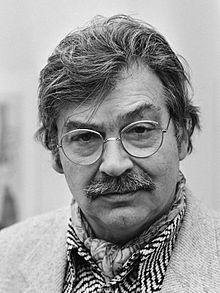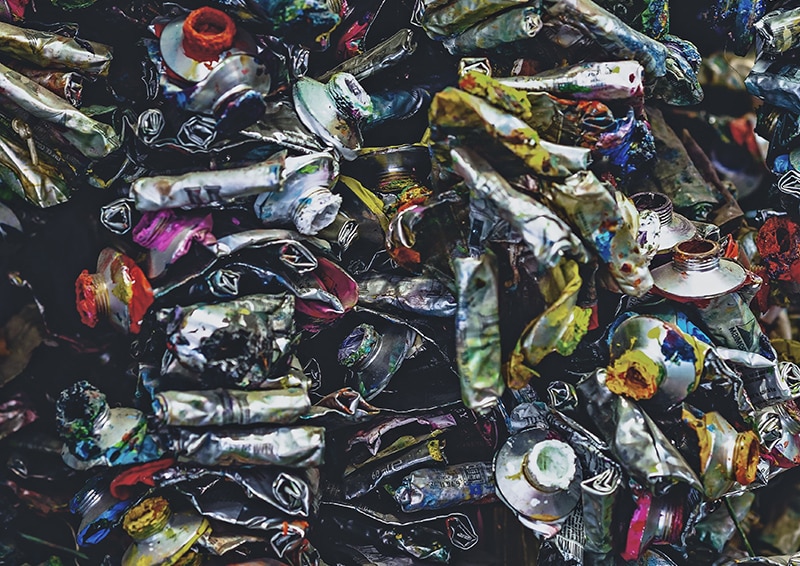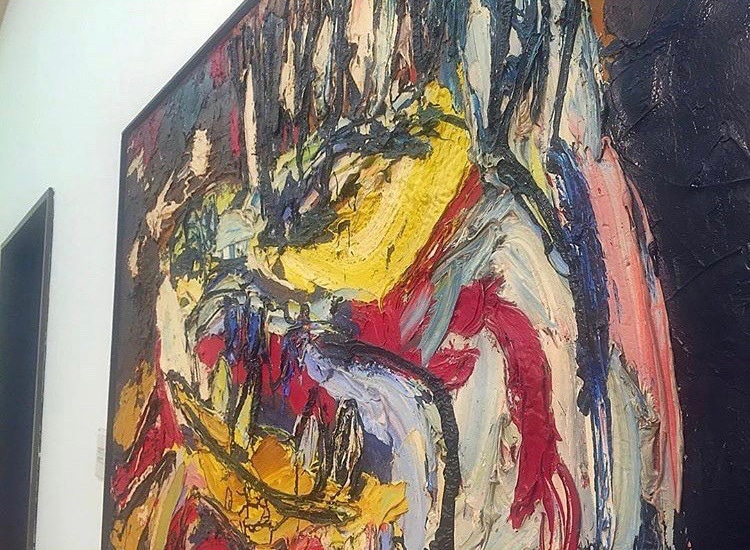 Netherlands has known a lot of artists. Artists who have become world famous. Unfortunately, many of them have since died. But their work lives on. One of these artists is Karel Appel. You've probably seen his works pass by. But maybe even without you realizing it. Below you can read more about his life and works of art.
Netherlands has known a lot of artists. Artists who have become world famous. Unfortunately, many of them have since died. But their work lives on. One of these artists is Karel Appel. You've probably seen his works pass by. But maybe even without you realizing it. Below you can read more about his life and works of art.Karel Appel in his younger years
Karel Appel grew up in Amsterdam. He began painting impressionist landscapes at a young age. But his parents would rather have him work in his father's hairdresser's shop. When he went to the art academy in Amsterdam, he was put out of the house. He followed his training here during the German occupation. People have blamed him for that for a long time. Some even thought that he cooperated with the Germans. Apple has always denied that. He was even fleeing the Germans for a while. Karel
Appel did not occupy himself with politics at all. He thought that art should be an expression of your deepest feelings. Working was never a political statement, but always an expression of feeling.

A sensitive artist
Appel started his career at the art academy. Appel was not only a painter, he was also a sculptor, lithographer, poet, etcher and ceramist. And indeed all his works were made with a lot of feeling. With some, they also raised strong feelings. People did not always like that. He made a mural for the Amsterdam City Hall, based on his work "Questioning Children". The civil servants who worked there did not like the work. After much protest, the work was hidden. And so Appel got more opposition in the Netherlands. Yet he continued to make provocative works.
Appel started his career at the art academy. Appel was not only a painter, he was also a sculptor, lithographer, poet, etcher and ceramist. And indeed all his works were made with a lot of feeling. With some, they also raised strong feelings. People did not always like that. He made a mural for the Amsterdam City Hall, based on his work "Questioning Children". The civil servants who worked there did not like the work. After much protest, the work was hidden. And so Appel got more opposition in the Netherlands. Yet he continued to make provocative works.
The working method of Karel Appel
Apple did not necessarily want to hunt people on the closet. He simply put a lot of feeling into his work. The manufacturing process was also quite heavy. In 1961 there was a documentary about Appel in which you see him at work. In this docu he also makes his famous statement: "I just mess around a bit." Yet this is not entirely true. Apparently Appel makes his paintings by throwing paints of paint on a canvas without thinking about it. In retrospect it appears that Appel is immersed in art history and in artists who inspire him. The final work requires more planning than seems at first glance.
Cobra
At the art academy, Appel met fellow artists Corneille and Constant, with whom he would remain friends for a long time. The three of them were members of CoBrA. The group consisted of a number of painters from Copenhagen, Brussels and Amsterdam. The name CoBrA is therefore a contraction of these cities - but in French. The group made artworks with a philosophy attached to it. As mentioned before, the Appel was about the expression of inner feelings. CoBrA also wanted to go back to the primal feelings. They took inspiration from drawings made by children and the mentally ill, but also surrealism and even their own handwriting was an important source of inspiration. The group only existed for a few years, but the ideas and influence live on. Even to this day.

https://pixabay.com/nl/dance-kindertekeningen-ballet-83478/
The years after CoBrA
CoBrA therefore existed for only a few years. Nevertheless, Appel was still associated with the group in the following period. In the 1950s Appel made a trip to Paris with his friend Constant. Here he came into contact with all kinds of famous painters. Painters such as Picasso and Dubuffet inspired him. Through his journey he developed further. His style of painting was still expressive, but it was much more. In the Netherlands he still did not get the appreciation he deserved. That was the case in Paris. Apple became more familiar from that time on. More and more people wanted to buy his art and museums wanted to show him.
Karel's legacy
In the years that followed, Appel continued to develop his style. He always used different materials and styles and combined disciplines. He worked with artists who were, for example, a choreographer or musician. A permanent thing is to challenge the viewer. The works can still appear violent. His work still influences contemporary artists. Something else heavy is the maintenance. Some of Appel's works have been applied with such thick paint that they still have not dried up! The people who care about his work have to be careful that the paint does not drip off the canvas. And that decades later.

Expo's now
If you have become curious about the works of Appel ... They can be admired all over the world. From New York and San Francisco to Brazil and Canada. They all exhibit works by Appel. Do not you want to go to the other side of the world to see his art? In the Netherlands there are also a lot of museums that have works from him in the collection. For example, the Cobra Museum for Modern Arts in Amstelveen. The name says it all: a museum specially created for art made by CoBrA. You also have the Stedelijk Museum in Amsterdam, the Van Abbemuseum in Eindhoven, the Rijksmuseum Twente and much more. Throughout the country there are museums that are also impressed by the art of Karel Appel. You too?
If you have become curious about the works of Appel ... They can be admired all over the world. From New York and San Francisco to Brazil and Canada. They all exhibit works by Appel. Do not you want to go to the other side of the world to see his art? In the Netherlands there are also a lot of museums that have works from him in the collection. For example, the Cobra Museum for Modern Arts in Amstelveen. The name says it all: a museum specially created for art made by CoBrA. You also have the Stedelijk Museum in Amsterdam, the Van Abbemuseum in Eindhoven, the Rijksmuseum Twente and much more. Throughout the country there are museums that are also impressed by the art of Karel Appel. You too?



No comments:
Post a Comment